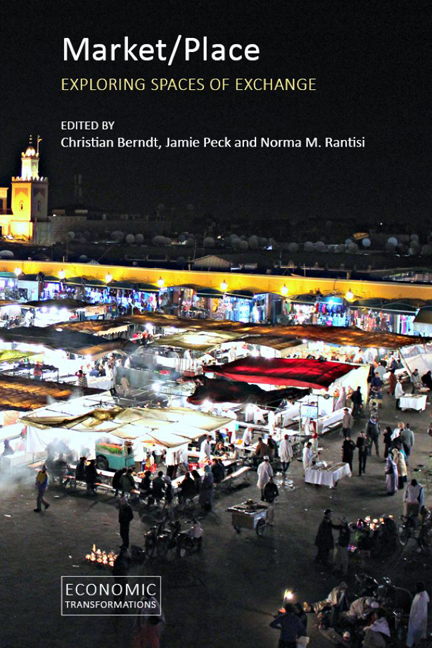4 - Geographies of marketization: performation struggles, incomplete commodification and the “problem of labour”
Published online by Cambridge University Press: 23 December 2023
Summary
As part of a wider, pluralist project to go beyond the hegemonic and stifling orthodox conceptualization of “the” market as perfect and all-encompassing, the research programme concerned with geographies of marketization is interested in actually existing markets, studying them in the making with an emphasis on marketization as a process rather than markets as selfcontained entities. Marketization is the collective work of a large number of actors, human and non-human, who form market assemblages that are structured according to a diversity of institutional logics and rationalities. Studying marketization “from within” and “from below”, we put particular emphasis on the geographies of really existing markets.
Our approach is inspired by Michel Callon's adaptation of science and technology studies (STS) and actor– network theory (ANT) to the study of economic processes, under the label of “social studies of economization” (Calışkan & Callon 2010). With the term “socio-technical agencement” (STA), Callon has introduced a compelling concept to describe economic entities, putting particular emphasis on “the market”. Borrowed from Gilles Deleuze, “agencement” has two meanings: first, it refers to the idea of a (spatial) assemblage of heterogeneous elements that have been carefully arranged; and, second, this arrangement, as a hybrid collective, shapes “distributed” agency in the sense that a given task is performed not by a single unaided human being but by a “human– nonhuman working group” (Bennett 2010: xvii; see also Callon 2007a: 320).
In these constellations, equipment, instruments and infrastructure play a crucial role. As “methods for knowing and handling the world” (Law & Ruppert 2013: 238), these devices have their own social life in at least three ways: first, they “assemble and arrange the world in specific social and material patterns” (Law & Ruppert 2013: 230); second, they enact particular forms of organization and format social relations; and, third, they can be used strategically by social actors in the “pursuit of political, economic and cultural advantage” (Law & Ruppert 2013: 239). Our particular focus in this chapter is on methods for knowing and handling the economy, or, to be more precise, markets.
- Type
- Chapter
- Information
- Market/PlaceExploring Spaces of Exchange, pp. 69 - 88Publisher: Agenda PublishingPrint publication year: 2020

